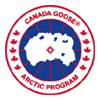
Humans are capable of performing amazing feats. Before muscles can produce movement by pulling on their attachments to bones, they must first obtain a source of energy. A complex series of metabolic pathways are present in human muscles that break down food to produce energy for different types of muscular activity. Our experiments will highlight how our bodies work in high altitude and during long distance endurance running.
Experiment Quick Links:
- Blood Oxygen Saturation Experiments » Report & Results
- Blood Adaptation Experiments » Report & Results
- Acid Base Balance & Respiratory Adaptations to Altitude » Report & Results
- Aerobic Oxidative Metabolism » Report & Results
- Anaerobic Glycolytic Metabolism » Report & Results
- Electrolytes in the Body » Report & Results
1. BLOOD OXYGEN SATURATION EXPERIMENTS
Date
May 13-15
Purpose
To study the effects of altitude on the human body's oxygen levels.
Discussion
Oxygen is the most important element for life. Without oxygen we die within minutes. Our entire cardio-pulmonary system is designed to transport oxygen from the environment to the cells in our body that use oxygen to create the energy that in turn fuels metabolism in every part of our body. Our trip to Bolivia will provide us with an excellent opportunity to understand oxygen metabolism in the human body.
Method
Expedition members will have their blood oxygen levels measured using a blood analyzer called an ISTAT. We will also measure blood oxygen saturation using "pulse oximetry". This will be measured at lower elevations and again as we move to altitude.
Results
Report & Results Available Here
School Exercise
Students can follow the expedition and track the altitude that the members are exposed to. Using the calculators and steps provided on the site, students will be able to calculate the PO2 in the air where the expedition is taking place and then predict the levels of oxygen in our blood. We will post the real data so that students can check their predictions against our real data.
Web resource: http://www.ventworld.com/resources/oxydisso/oxydisso.html
2. BLOOD ADAPTATIONS EXPERIMENTS
Date
Throughout the expedition
Purpose
Demonstrate the effect of altitude on the oxygen carrying capacity of human blood.
Discussion
With an increased oxygen demand, and decreased oxygen supply the i2P runners on the Salar run the risk of developing an oxygen deficit. The oxygen deficit can cause altitude sickness. The best way to prevent altitude sickness is by gradually ascending to altitude. This allows the human body to naturally compensate to decreased atmospheric oxygen through a series of adaptations. One of the adaptations is an increase in blood count. In response to low blood oxygen, red blood cell counts increase within days of arriving at altitude.
Method
We will again take blood samples from the expedition members and analyze them using the ISTAT measurement device. We will take measurements at lower and higher elevations to show the acute (short term) responses and then repeat the measurements 7 days into the expedition to show the more chronic (long term) adaptations that happen in the body.
Results
Report & Results Available Here
We will plot blood parameters (hemoglobin and hematocrit) over time to show how these measures change with exposure to altitude and how the body adapts to deal with the low oxygen.
3. ACID BASE BALANCE & RESPIRATORY ADAPTATIONS TO ALTITUDE
Date
May 12 - 15
Purpose
To highlight how the body's breathing control system changes in low oxygen and how we respond to exercise.
Discussion
Exposure to hypoxia induces a definite change in ventilation. This change is also subject to adaptation over time if the exposure is chronic. The change in ventilation with exposure to hypoxia is commonly referred to as the hypoxic ventilatory response, (HVR) defined as the change in ventilation in relation to a change in % arterial oxygen saturation.
Method
We can measure the ventilatory response to hypoxia. This can be done at rest and while performing a specified exercise workload. We can measure ventilation, PCO2 and PO2 to show how in hypoxia we hyperventilate, and how these relate to carbon dioxide metabolism and regulation.
Results
Report & Results Available Here
4. AEROBIC OXIDATIVE METABOLISM
Date
May 15 & 19
Purpose
Demonstrate the how the aerobic energy system provides energy to fuel our muscles when we exercise.
Discussion
The aerobic oxidative energy system is a very important energy system in the human body, as it is the primary source of energy for a very broad range of activities. Daily activities such as walking, jogging, swimming, household chores, and walking up stairs all use energy provided by the aerobic oxidative system. During intense exercise, well trained individuals can elevate their rate of oxygen consumption up to 20 times above resting values.
At elevation we expect to see a decrease in heart rate and improved metabolic efficiency as the runners adapt to the decreased atmospheric pressure on the Salar.
Method
Aerobic Metabolism: Heart Rate
Participants will wear heart rate monitors during a running day. We can measure heart rate as they run across the distances.
Comparisons can be made between runners.
We can also do this on day 1 and day 7 and compare how much faster people run at the same HR or how much lower the HR is at the same running speed.
Aerobic Metabolism: Caloric Expenditure
Participants will wear heart rate monitors during a running day. We can measure calories they run across the distances. Comparisons can be made between runners.
We will also determine changes in metabolic efficiency between days 1 and 7.
Results
Report & Results Available Here
We will plot aerobic measures like heart rate and calories burned over time during a single run to show how these measures change with exercise. We will repeat the measurements later in the expedition to show how the expedition members are adapting to constant exercise as we run across the Salar.
School Exercise
Students can take their heart rates at rest, during light exercise (walking in place or around a track) and during more intense exercise like running. Students can compare themselves to each other and draw their own heart rate response on a graph (X-axis = intensity, Y-axis = heart rate)
5. ANAEROBIC GLYCOLYTIC METABOLISM
Date
May 17
Purpose
Demonstrate the how the anaerobic energy system provides energy to fuel our muscles when we exercise at high intensities.
Discussion
The body relies primarily on anaerobic metabolism for the energy required to perform intensive exercise of greater than 12- 15 seconds and less than 3 minutes duration. Anaerobic glycolysis is the primary energy system that is used in sporting events such as the 800-metre run, 200-metre swim, downhill ski racing, and 1500-metre speed skating and in other activities such as sprints.
Method
We will take blood samples from the expedition members and analyze them using a Lactate Pro measurement device. We will take measurements at low and high exercise intensities.
We will also take blood glucose measurements before and after exercise to show how our bodies use sugar to fuel intense exercise.
Results
Report & Results Available Here
Blood lactate production will be plotted against intensity to show how this metabolite is produced during exercise.
School Exercise
Students can repeat the exercise experiments, but instead of blood lactate measurements, students can rate themselves on the BORG exertion scale.
6. ELECTROLYTES IN THE BODY
Date
May 19
Purpose
Demonstrate the effect of exercise and sweating on the levels of electrolytes in the human body.
Discussion
The body loses electolytes like salts through sweat. It is important to replace salts in the body during and after exercise or sweating. The human body needs salts for health and to function normally. Salts are used in the muscles, nerves, and heart.
Method
We will again take blood samples from the expedition members and analyze them using the ISTAT measurement device. We will take measurements at the beginning of the say and after running to show the effects of exercise on electrolyte levels. We will have some expedition members rehydrate with water, and others with a sport drink and show the difference.
Results
Report & Results Available Here
We will plot blood electrolyte parameters over time to show how these measures change with exercise and rehydration.
School Exercise
Students can weigh themselves before and after 30-60 minutes of aerobic exercise (like a soccer game or jumping rope for example). This will show how much body mass is lost with sweat when we exercise.








